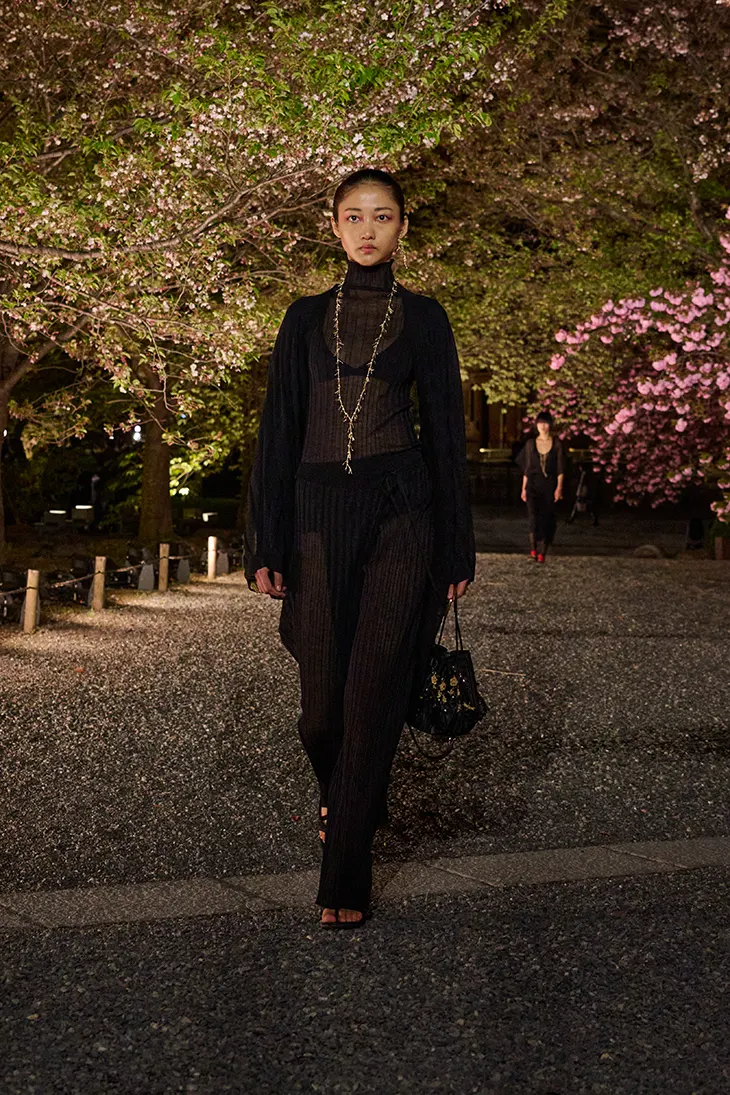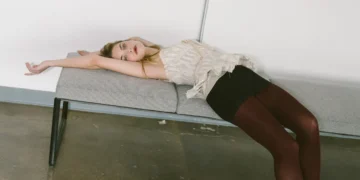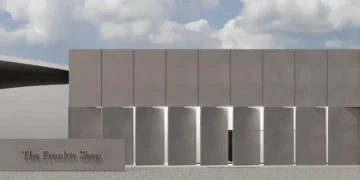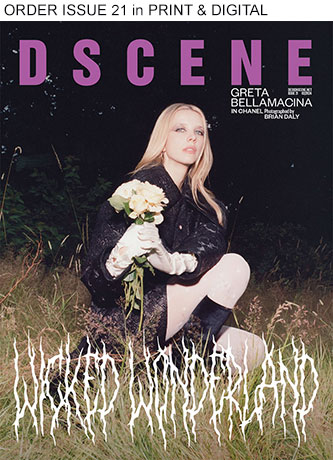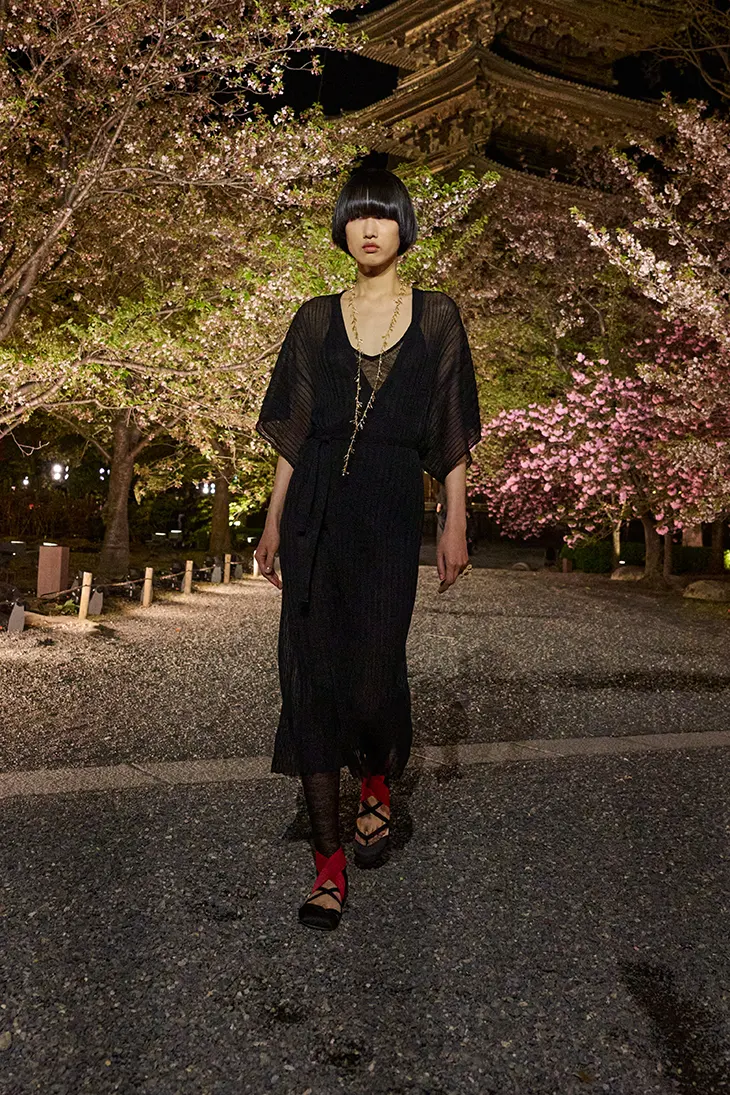
For Dior Fall 2025, Maria Grazia Chiuri steps into the architectural core of fashion, where space is not just occupied but shaped by what we wear. The latest collection reflects her ongoing conversation between garment and body, between the inherited traditions of dress and the ways we live within them. Drawing on both Japanese costume and the house’s archives, Chiuri offers a precise yet poetic study in proportion, restraint, and emotional geometry.
At the center of the collection stands the kimono both as costume and a structure. It reappears in silhouettes that speak softly of ceremonial movement while carrying the assertiveness of Dior tailoring. Chiuri revisits Monsieur Dior’s own kimono-inspired designs, the Diorpaletot and Diorcoat, as conceptual blueprints. She doesn’t replicate them but adapts their logic, using generous lines and belted constructions to respect the body while reshaping its outline. The result is a series of outerwear pieces that feel suspended between cultures, timelines, and expectations.
Textiles anchor this spatial language. Silk appears throughout, chosen for its fluidity and tactile richness. Golden embroidery is worked into coats and skirts like quiet declarations. Prints echo the serenity of Japanese gardens, designed not to decorate, but to suggest an atmosphere. In Chiuri’s hands, fabric behaves like material in architecture: it folds, layers, and flows in deliberate ways, revealing a studied understanding of how garments live in motion.
The collection’s most powerful gestures emerge in its stillness. Wide trousers and long skirts move with weight and silence. Colors retreat to a dense black, punctuated by gold inlays and floral motifs that flicker rather than shout. Nothing feels ornamental. Each design is grounded by the sense that clothing can express identity as architecture does, through shape, orientation, and tension.

Chiuri’s visit to the exhibition Love Fashion: In Search of Myself, co-organized by the Kyoto Costume Institute and the National Museum of Modern Art, Kyoto, informs this approach. That dialogue, between traditional Japanese dress and contemporary fashion, adds depth to the collection’s study of how cultures cut and carry emotion through clothing. This isn’t a cultural fusion, but an encounter between two philosophies of form. The body remains central throughout, not as a model for display, but as a vessel of lived complexity.
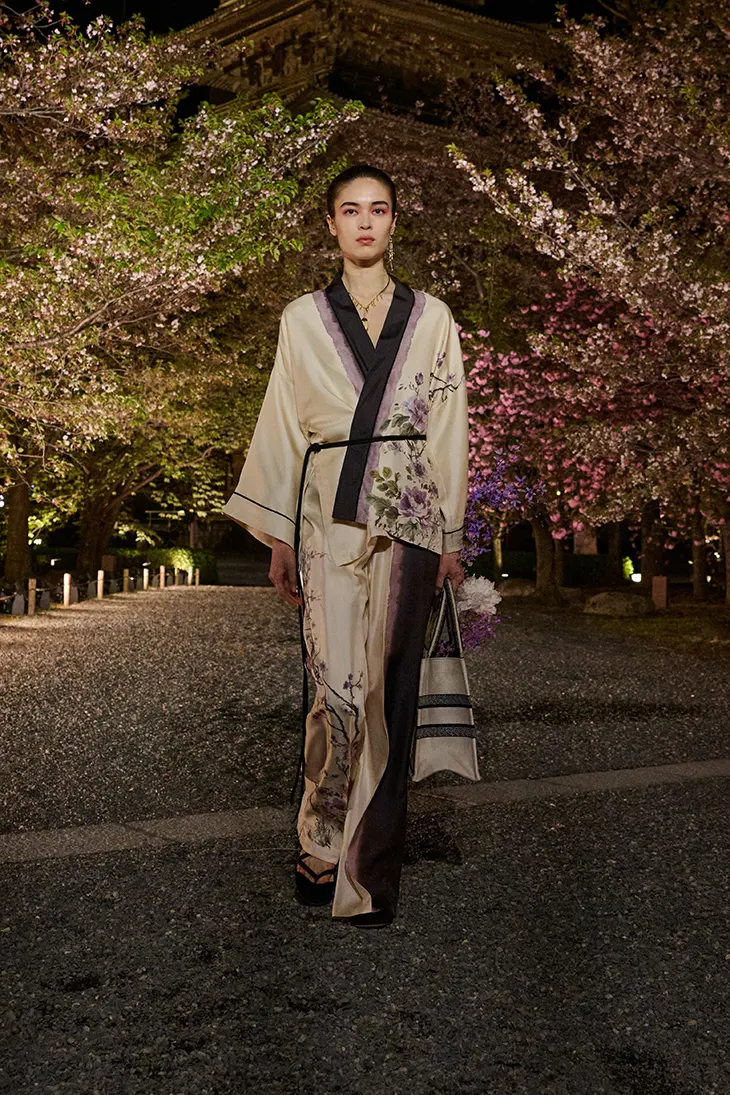
In Dior Fall 2025, Chiuri doesn’t impose a narrative, she lets the garments suggest their own. The result is a collection of precision and grace, where garments become temporary structures, framing the body as both subject and space. Fashion here is not fantasy or armor, it is a quiet structure, built to move, shaped to feel.
